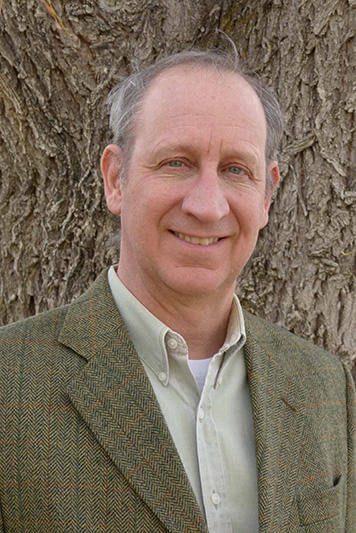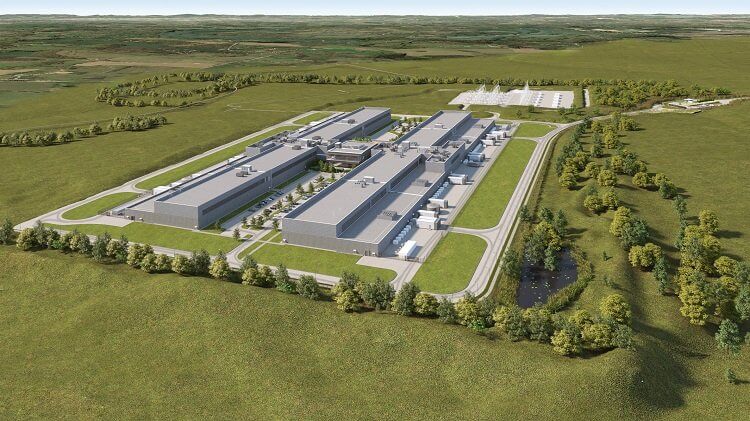
Colorado Senate Bill SB24-085, “Sales & Use Tax Rebate for Digital Asset Purchases” introduced on January 24th, would give substantial tax savings incentives to stimulate construction of new data centers in Colorado.
John C. Gavan of Paonia, who has a 25 year career in tech and sat on the Colorado Public Utilities Commission, argues this is a VERY bad idea for Colorado’s environment and ratepayers, and he really wants readers to know why. He says he can only talk about this now because his term as a commissioner on the PUC expired last year, which freed him to discuss it.
First, readers need to know that the boom in computer-intensive tech, like artificial intelligence (AI), cloud computing, crypto mining and businesses outsourcing their IT to cloud-based systems, combined with the rush to electrify cars and homes are all pushing our country’s existing power grid to the brink, leading to a major power crunch and imperiling utilities’ ability to meet the rapid, massive increase in demand.
SB24-085 makes significant claims of economic benefits, Gavan says, but it doesn’t mention the huge negative environmental and consumer risks that data centers historically incur.

For starters, data centers consume enormous amounts of electricity. Right now they represent about 2% of the total electricity consumption in the U.S. With the rapid expansion of cloud services and AI, data center construction is accelerating rapidly around the world, and especially in the U.S., mostly in places where electric rates are low and environmental costs are modest. Colorado is especially attractive for these centers because our electricity rates are below the national average, so there is already a substantial incentive to build these power-hungry facilities in our state.
Recently, “hyperscale” data centers have burst onto the scene. These are enormous operations that house thousands of power-hungry computers that run 24 hours a day, 7 days a week and 365 days a year. Right now, Colorado’s first hyperscale data center is under construction in Aurora, CO. This facility will consist of four large buildings on a 67-acre site. A $28 million, 230 kilovolt dual-circuit transmission line is being built from the Xcel substation to serve this facility and support its massive need for power. This transmission line could potentially support up to almost 1 gigawatt (1 billion watts) of power.
How much is one gigawatt of power? It is the amount one whole nuclear plant puts out. It is equivalent to the power generated by about 2.5 million photovoltaic panels, 100 million LED light bulbs or 9,090 Nissan Leafs. It’s enough to power about 140,000 homes.

Xcel Energy Colorado’s peak load is about 7 gigawatts, so if the full capacity of this data center is used, the load could approach one gigawatt, or almost ONE SEVENTH of Xcel’s peak load. This could make this new data center Xcel’s single largest load.
It will be a bigger power eater than the Climax Molybdenum mine, larger than the Evraz steel plant in Pueblo, and larger than Kmart and Target put together.
Imagine what could happen if multiple hyperscale data centers were drawn to Colorado? The results could be devastating for Colorado residents.
Add to this that several laws passed in the last few years have committed Colorado to decarbonize with the goal for electricity providers of reducing greenhouse gases by 80% by 2030. To meet this goal, Colorado electrical providers committed to closing all of the state’s coal-fired power plants by 2030. You’ve probably also noticed that in the last few years, utilities have been installing gigawatts of new renewable power generating plants, like solar and wind power plants as well as battery storage. If a bunch of new hyperscale data centers are built in Colorado, lured here as a result of financial incentives and inexpensive electricity, it increases the likelihood that Colorado’s decarbonization initiative would fail. The Sierra Club has already labeled Bitcoin mining plants “a lifeline for the coal industry.”
Another environmental problem relates to water. Data centers generate massive amount of heat and need to be cooled. Normally they use evaporative chillers to cool the air circulating around the thousands of computer servers inside these facilities. The water consumption of data centers can be massive. It isn’t unusual for a data center to use from 1 to 5 million gallons of water per day for cooling, the equivalent consumption of a town of 50,000 people. With our state’s current drought conditions, dropping flow rates in the Colorado River and depleted aquifers across the state, this is completely unsustainable.
Consumers at risk and not as many jobs will be created as legislators may think
Every data center built in the state would also have a massive effect on consumers. As the power grid becomes more taxed, utilities will have to build more power generation facilities and distribution and transmission and lines. Everyone knows these costs are passed on to ratepayers, and taxpayers will also have to subsidize any tax breaks the legislature gives to developers of these data centers.

Legislators may also be under the impression that these data centers will create a lot of high paying jobs. The truth is that once these facilities are built, they are filled with servers, routers, disk arrays and other equipment that largely functions on its own. They are also usually remotely managed. As a result of this, despite their massive size, data centers require few actual employees and there are usually more security personnel in these warehouses than employees who actually work on the equipment.
Gavan, who spent 25 years in the IT industry, says,
“On occasion I gave tours of data centers to non-technical visitors. For most of them, it was their first visit to one of these facilities. The comments received the most typically were, ‘Boy, it’s cold in here!,’ and ‘Wow, it’s noisy, too!’ and finally, ‘Where are all the people?'”
Additional reading:
Amid explosive demand, America is running out of power, Washington Post, March 7, 2024
The obscene energy demands of AI, The New Yorker, March 9,2024
U.S. is facing risk of rolling blackouts as predicted electricity demand DOUBLES with AI data centers and crypto mines presenting ‘staggering challenge’ to the outdated grid. The Daily Mail, March 7, 2024
Aurora data center to become one of Xcel Energy’s biggest customers, rivaling mines and steel mills, The Colorado Sun, October 11, 2023
AI Frenzy Complicates Efforts to Keep Power Hungry Data Sites Green, the New York Times, February 9, 2024
Cryptocurrency’s Dirty Secret: Energy Consumption, Columbia Climate School, State of the Planet, May 4, 2022
Lobbyist filings for SB24-085: Who is supporting it and who is opposing it

There are millions more people to help over load anything. Once again man tends to destroy itself in the name of progress. Expecting everyone to get things done in this progressive market, carrying around phones, small kiddos addicted already. The Age of Aquarius is about technology, note the two waves of it’s symbol. This is just a beginning.
This is essential the new (digital) gold rush, and term “hyperscale data centers” is usually employed as a obfuscated buzzword to confuse/placate communities in which they build from knowing these are actually Crypto mines until its too late.
This is also a clever vehicle for Xcel to further soak ratepayers; first by lobbying the legislature for tax breaks to spur “investments” in the infrastructure upgrades necessary to support this intense usage, which are completely passed on to the consumer and then generates obscene profits for itself as this higher base demand increases generation expense. Classic doom loop of a protected and public-subsidized monopoly, so would have appreciated a bit more candor on this from Mr. Gavan.
The subject of hyperscale data centers hasn’t been on anyone’s radar, but it really needs to be, because it’s going to impact all of us. Thanks to John Gavan for bringing it to attention.
Thank you Anne! for bringing this to our attention.
I had no idea about all this. Too bad Colorado is allowing these large scale data centers. I hope we don’t end up with one on the Western Slope. Great reporting, Anne.